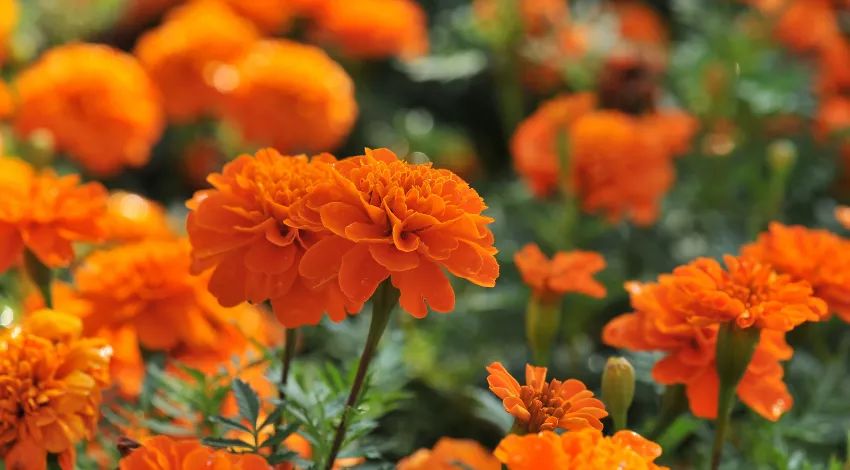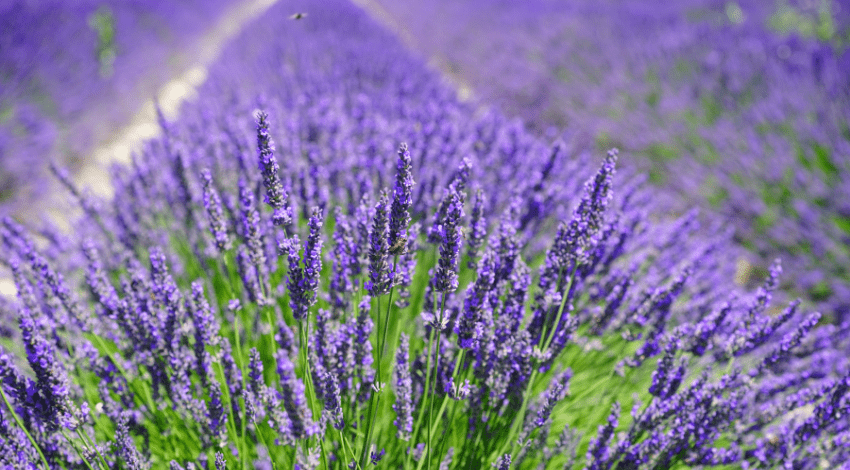Sometimes while staying and walking in our garden we can see a large number of bees, which can make it difficult for you to stay in the garden. Some people plant marigolds to keep bees away, but this is not the way to keep bees out of your garden.
Bees love marigolds for nectar and pollen. Nectar provides bees with the nutrients they need to produce honey, while pollen provides bees with protein.
Unlike other invasive bee species, such as wasps or the wasp that ravages marigolds, bees never harm flowers. In fact, bees love marigolds.

In this article, I will describe the relationship between marigolds and bees, as well as why bees love marigolds. I will list some of the flowers that bees love. And if you want to know more about it, read our article 20 Best Flowers for Bees.
Do Bees Like Marigolds?
Like most pollinators, bees love marigolds. Marigold flowers are a great source of nectar used to make honey.
The nectar provides the bees with sugar, which is an instant energy boost for the bees. Once the bees get the excess nectar from the marigolds, they return to the hive and share it with other bees. An enzyme in the bee’s stomach then turns the nectar into diluted honey.
Bees also love marigolds because of their yellow color. This color often attracts bees to flowers.
The scent of marigold is also an important attractant for bees. The smell attracts bees to the nectar.
In addition to the various reasons why bees love marigolds, marigold flowers have special benefits;
What Are The Benefits Of Marigold?
Similar to bees, marigolds also attract other beneficial insects such as ladybugs, parasitic wasps, hoverflies and other beneficial insects, protecting the plant from aphids and other harmful pests.
Natural Preservative
From ancient times to the present, the most popular use of marigold is to treat skin wounds, burns, rashes, itching, bites and swelling. This is because marigold promotes healthy new tissue growth, increases blood flow to affected areas, boosts collagen production, and hydrates dry skin.
Natural Deworming
Marigolds contain pungent odors, antioxidant ingredients, and essential oils that are used to naturally repel mosquitoes, pests, and other insects. This is why marigolds are often grown in vegetable gardens.
Reduce Conjunctivitis And Eye Inflammation
Marigold extract can treat conjunctivitis and other chronic eye infections. Research has also shown that these extracts can protect eyesight by protecting the eyes from UV rays.
Prepare A Cup Of Soothing Digestive Tea
You can also make tea with marigold flowers to help relieve symptoms caused by inflammatory bowel disease.
Why Are Bees Attracted To Marigolds?
Bees are primarily attracted to marigolds because of their pollen and nectar. The pollen and nectar of marigold flowers are an important food source for bees.
Like humans, bees need a balanced diet, which they get from flowers such as marigolds. Bees get protein from pollen and carbohydrates and sugars from nectar.
Bees use nectar as a source of food and energy to travel to and from their homes. On the other hand, they use pollen collected from marigolds to feed the larvae (small bees).
Not only are marigolds a food source for bees, marigold flowers also attract bees because of their color. Bees have good color vision, so the yellow color of marigolds attracts them to the flowers. The perfect color vision of bees helps them find flowers and the nectar and pollen they provide.
Marigold flowers also don’t repel nectar-seeking bees. Although they have an odor that repels insects, including wasps and wasps, marigolds do not repel bees. For bees seeking nectar, smell is not a problem.
When Do Marigolds Bloom?
Marigolds are beautiful flowers that are easy to grow anywhere; from Europe to the Americas, from Asia to Africa, marigolds can be found everywhere.
Marigolds like warm temperatures and humidity and start blooming above 22 degrees Celsius (mid-January). Flowers will continue to bloom until the temperature reaches 35+ degrees Celsius (until the end of April).
During boom times, you’ll see most marigold varieties bloom in the early hours of the morning. After that, the flowers stay fresh for over a week.
Marigolds can also bloom in summer and winter. For example, perennial marigolds bloom best in summer. While you may notice smaller blooms in summer, you definitely want to have a large number of marigolds blooming together in summer.
On the other hand, marigolds can also bloom in winter. If you live near equatorial countries like Africa, the Indian subcontinent, or other Asian countries, your plants will bloom in winter. But if you live in frost-like conditions, you may not see your marigold bloom.
What Kind Of Flowers Do Bees Like?
As much as bees love flowers, there are flowers that are not interesting to bees and simply will not visit them, even more so some flowers repel bees.
Here are some of the flowers that bees love:
Lavender
Bees and lavender are perfect friends, especially during bloom, as they love anything in the flower that can get nectar or pollen. Unlike calendula, the essential oils in the leaves of lavender have a pleasant fragrance that makes them more attractive to bees.

Snapdragon
Unlike other flowers, snapdragons are unique flowers in smell, shape and color. Usually, bees are active during the day, when snapdragons release most of their scent.
Bees can’t see red, but can see yellow and blue, which makes snapdragon’s color attractive to bees.
Also, the shape of the flower makes it easy for bees to acquire its sweetness.
Bee Balm
Bee balm is another perfect flower for attracting bees. This perennial flower grows to 4 inches and produces colorful tubular flowers that are an excellent source of nectar.
This flower is easy to grow, deer resistant and drought tolerant, making it a great addition to bee gardens in hot climates.
In addition to these three main flowers, bees are also attracted to other flowers such as sunflower, black-eyed Susan, lilac, coneflower, wisteria, sedum, cosmos, honeysuckle, hellebore, hollyhocks, foxglove, crabapple, and hyacinth.
Sage
Sage and bees are made for each other. Their small flowers hold enough nectar to attract all the bees nearby.
Sage is very resistant to long-term droughts, but in order for nectar to flow from its flowers, moisture is absolutely necessary.
It blooms from May to late July. Up to 500 kg of honey can be obtained from one hectare. The flowers are rich in nectar and are an excellent grazing.
Sage honey is refreshing, due to the high percentage of vitamin C. It can be both light and dark in color, and is almost always used in many ailment treatments.

Aster
Aster is a plant that mainly blooms in September. The vast majority of plants were already in bloom at that time, so bees visit this plant a lot and collect nectar and pollen. The aster’s origins are from North America. They like light, moist and drained soil and moderately fertile soil. The flower is in various shades of pink and purple.
It is easy to grow and in can be found in a wide range of colors and shades. It blooms in late summer and autumn, and provides bees with food during the later season. It provides bees with good nutrition during the winter months.
For bees, this is one of the last abundant autumn pastures. The asters are incredibly attracted to bees. As long as the weather is nice and sunny at this time of year, the asters are full of bees. There are often so many of them that everything around the asters you can literally hear buzzing.
Dandelions (Taraxacum)
Dandelion is one of the best friends of pollinators and therefore it is recommended that you do not remove them from your garden in the spring. To help pollinators such as bees and bumblebees, allow the grass to grow to ankle height.
Dandelion is a medicinal herbaceous plant very widespread in Italy. It is found mainly in grassy and ventilated places characterized by moist soils. The leaves are simple, oblong, lanceolate and with a serrated edge.
Dandelion is easily recognizable by its intense yellow flower heads that close when the sun sets.
Flowering occurs in spring, April or May, but can be extended until September. It prefers a temperate climate even if it is not a particularly demanding plant because it can grow along roadsides. No special soil is needed to grow dandelions in pots, common soil in vegetable gardens is enough.

